California Condor - Edge of Extinction

Hand Embroidery & Applique in Cotton, Linen, Silk; Polymer Clay; Onyx. 44.25" x 44.25" c. Dianne Ayres, 2020.
I
have wanted to stitch a California Condor for quite a while since they
are such a distinctive bird (largest flighted bird on Earth these days!)
and their story is rather an environmental success. One aspect I find
intriguing is that there was much debate in the 1980’s whether to
capture the remaining 22 Condors in the wild for a captive breeding
program or to focus on saving their
habitat and let nature play out. Environmentalist as prominent as
David Brower were advocating for the later. Fortunately, the former was
the course taken and today there are about 250 flying free and
reproducing in the wild and about that many as well in captivity.
What
was not fully understood is that habitat loss was not the culprit. In
fact, only in 2006, after having released Condors that had been raised
in captivity and finding them in distress or dead, was it recognized
that the culprit is lead poisoning from bullets. Hunters shoot to the
heart and discard the innards of their kill in the wild. Condors,
being scavengers, unknowingly consume these deadly meals. Legislation
was passed in 2013 to outlaw the use of lead bullets in Condor
territory, but still most Condors by the age of seven in the wild have
needed to be treated for lead poisoning and the law is under threat of
being repealed.
The making of California Condor - Edge of Extinction
After completing Where is the Middle on Nowhere?
the next project I envisioned was creating a life-size California
Condor - in flight -- the whole 10 foot wingspan. I experimented with
various techniques; embroidery, crochet, making the individual feathers
on a wire frame wrapped with yarn... each time giving in to the enormity
of the task.
But
when the call for the de Young Open was announced with a suggested
theme of "on the edge" I knew it was time to revive the Condor project.
Being in the midst of Covid-19 shelter-in-place orders I decided to
devote myself to the task and while my studio is not in my home it a
short distance away. I was there alone and could make as much of a mess
as I liked.
I
began by renewing my research on Condors and the current status of the
recovery program. One key location in the recovery program is Ventana
Wildlife Society. I visited there in 2015 and had the amazing experience
of seeing two Condors in the wild, not flying, but even perched on a
distant high cliff they are truly impressive. VWS sponsors a live nest
cam and one particular bird seemed to represent the attitude I wanted to
convey - upper right bird in this image.
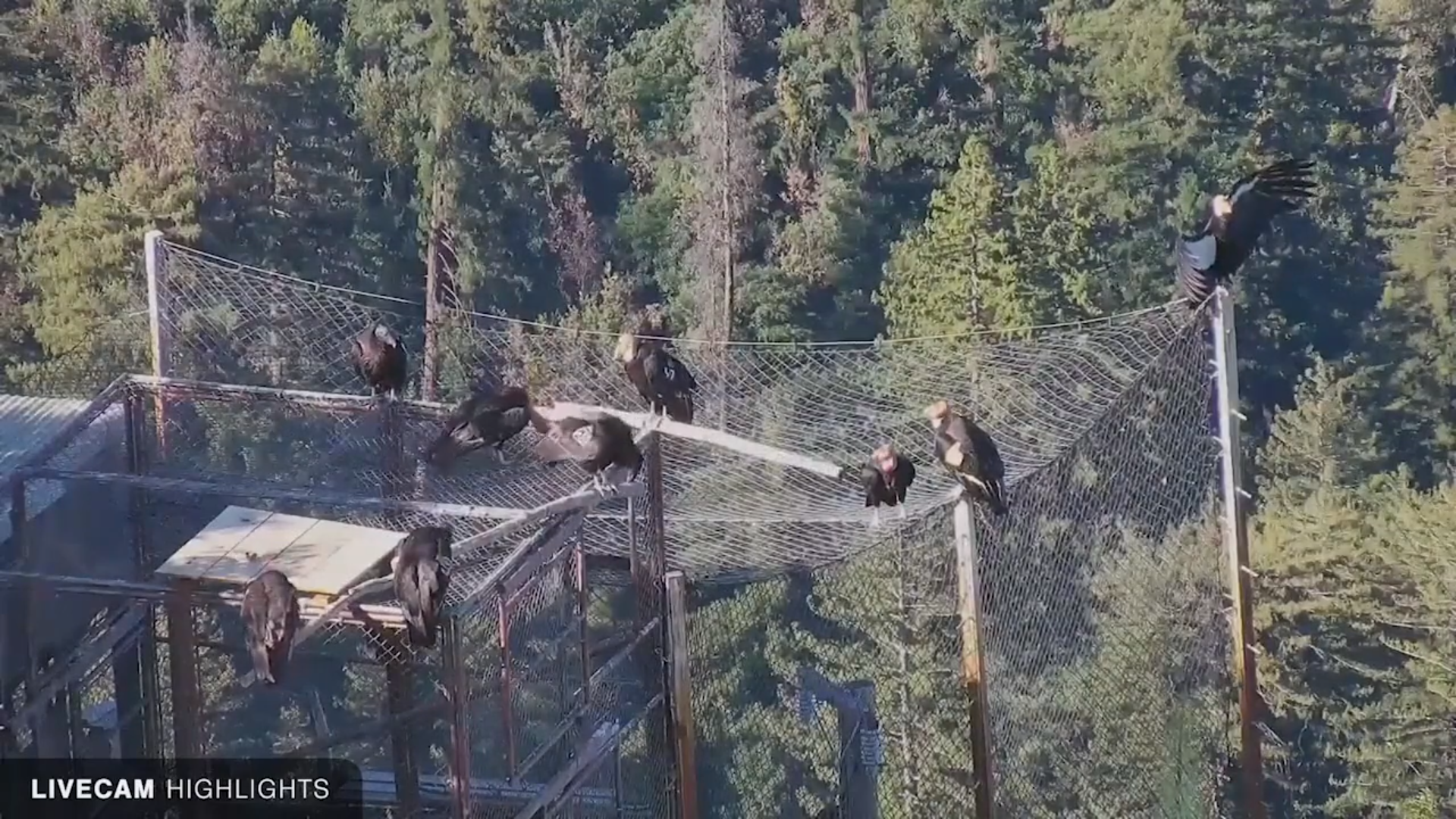
Screencapture from Ventana Wildlife Society Condor Cam https://www.ventanaws.org/condor_cam.html
Being
in lockdown meant that I couldn't just pop down to the art or fabric
stores for supplies. The de Young specified that the artwork needed to
be mounted, I had 44" stretcher bars on hand so that determined the
size, a good constraint given the month I had to complete the piece.

Head First
This
called for hand-painted silk, not a technique I had done before.
Placing an image under glass on my light table, by the third try I had
the cloth for the head.
These are the first two attempts, maybe someday to become the ghosts of Condors past and future....

Handpainted silk head into an embroidery hoop with bound buttonholes to hold the Onyx eyes.

After
searching my button box in vein for something like a Condor beak and
talons, I decided to try my hand a polymer clay. Fortunately the art
store was now set up for curbside pick-up.
 |
| Add caption |
I tub dyed fine cotton for the sky and "scrunch-dyed" a flax linen for the cliff.
After
refining the overall shape of the bird, I cut it from some black heavy
cotton and basted onto the sky. Condors have a white patch of feathers
on their under-wing coverts. These I cut from the white silk and used
fusible net along the edges to hold them in place.
To
mark for embroidery stitches I used applique tearaway as an overlay to
pencil in guidelines. This technique worked well for the feather
stitches of white silk embroidery on the white appliques and for the
left black-on-black wing stitches but the tearaway is tough to tear away
so for right black satin stitched wings I adopted another technique. I
used the tearaway guidelines to stitch the couching thread for the
centers of each feather and a basting thread for the edges. Then I
removed the tearaway. filled in satin stitches in black perle cotton
embroidery, and ran the rayon/cotton DK weight black yarn under the
couching stitch for the center line of each primary feather.
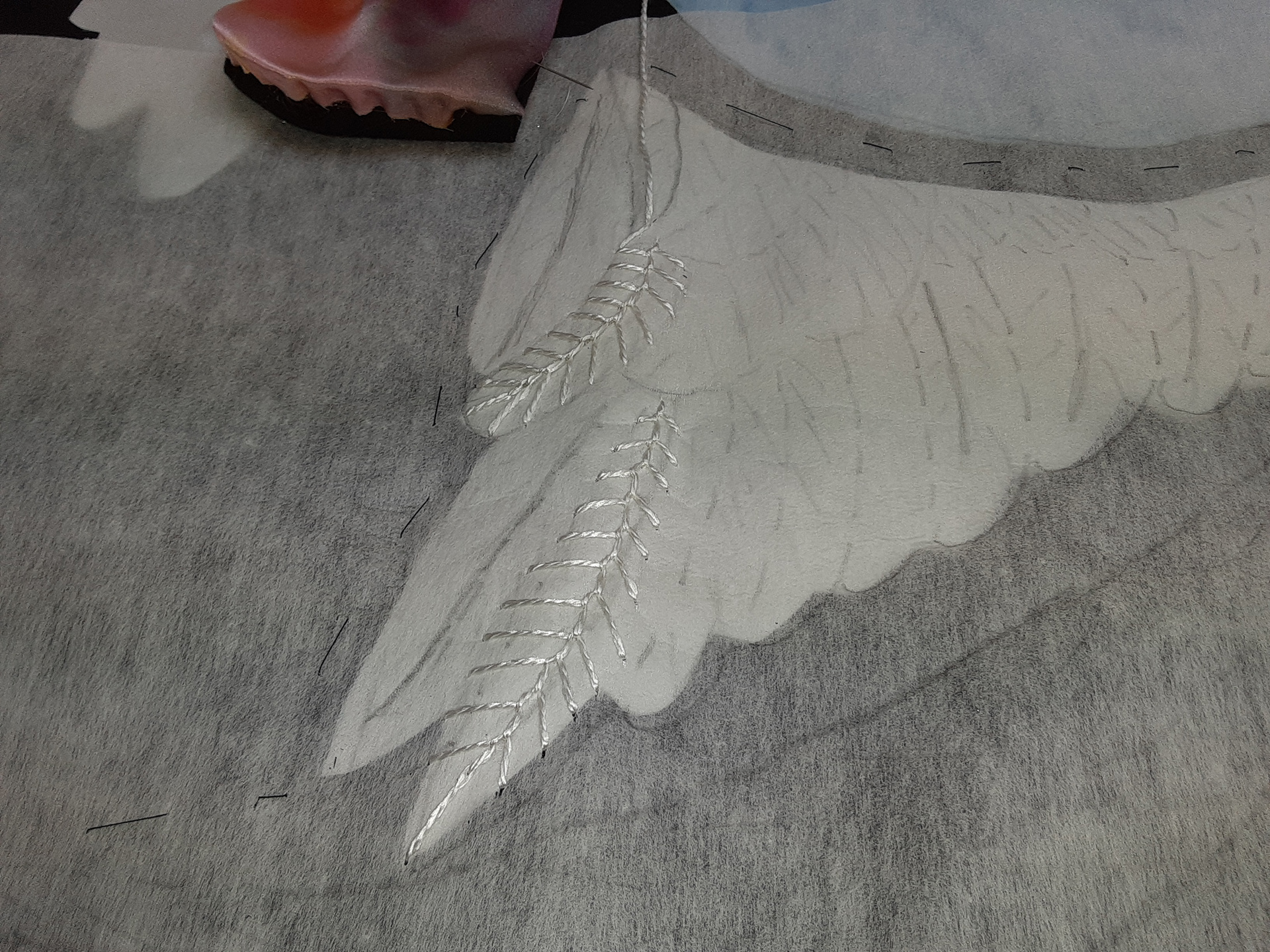
White covert feather stitching, silk embroidery thread on silk applique, using applieque tearaway for guidelines

Dorsal side of primary feathers, black satin stitch & couching embroidery

Removing the applique tearaway was a slow-going task.
Various stitches for the body and underwing feathers.
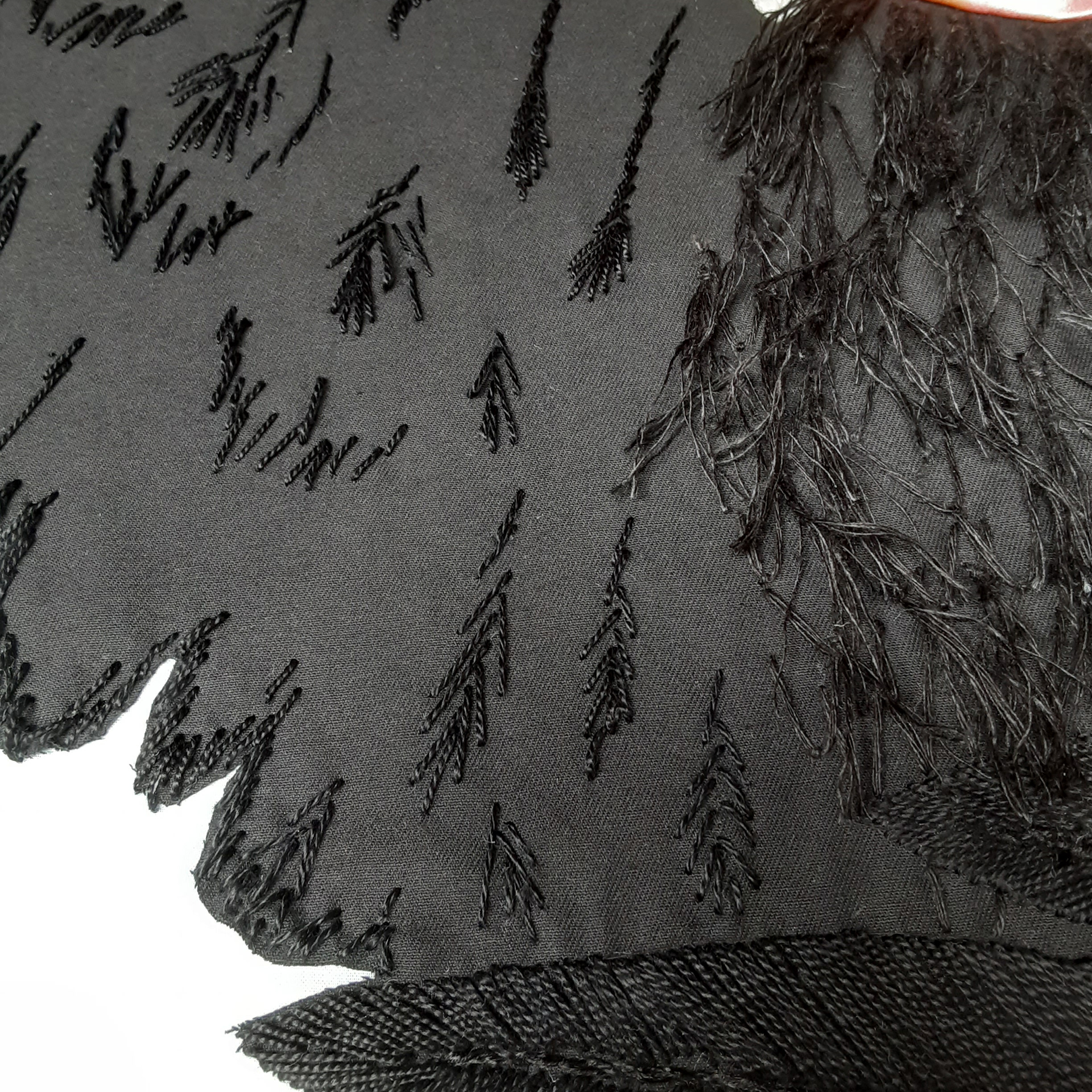

Condors are known for being somewhat gregarious around humans, especially those raised early in the breeding program
and released into the wild. I've heard of them playing "tag" with
back-country hikers and joining backpackers at their lunch break,
sitting nearby,
patiently
waiting...
patiently
waiting...
Protocol
for the captive breeding program changed so as not to imprint a
connection to humans, but I still imagine Condors recognize that they
are receiving special attention.
Thus,
my poem acknowledges their special status and having recovered from
near extinction. "Vwaha" is Condorese for voila - their mouth structure
just cannot pull off the fancy French. The twenty-two small black
stitches represent the last remaining California Condors existing on
Earth in 1987 which were taken into captivity.
22 birds made up the entirety of the species!
As
noted above, the breeding program has shown great success. I encourage
you to learn more about these amazing birds and always consider all
species that share this planet.
- Dianne Ayres

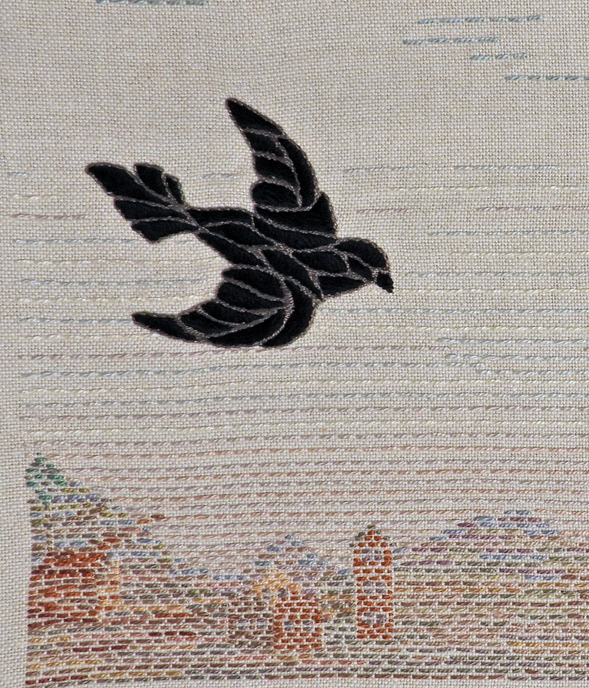
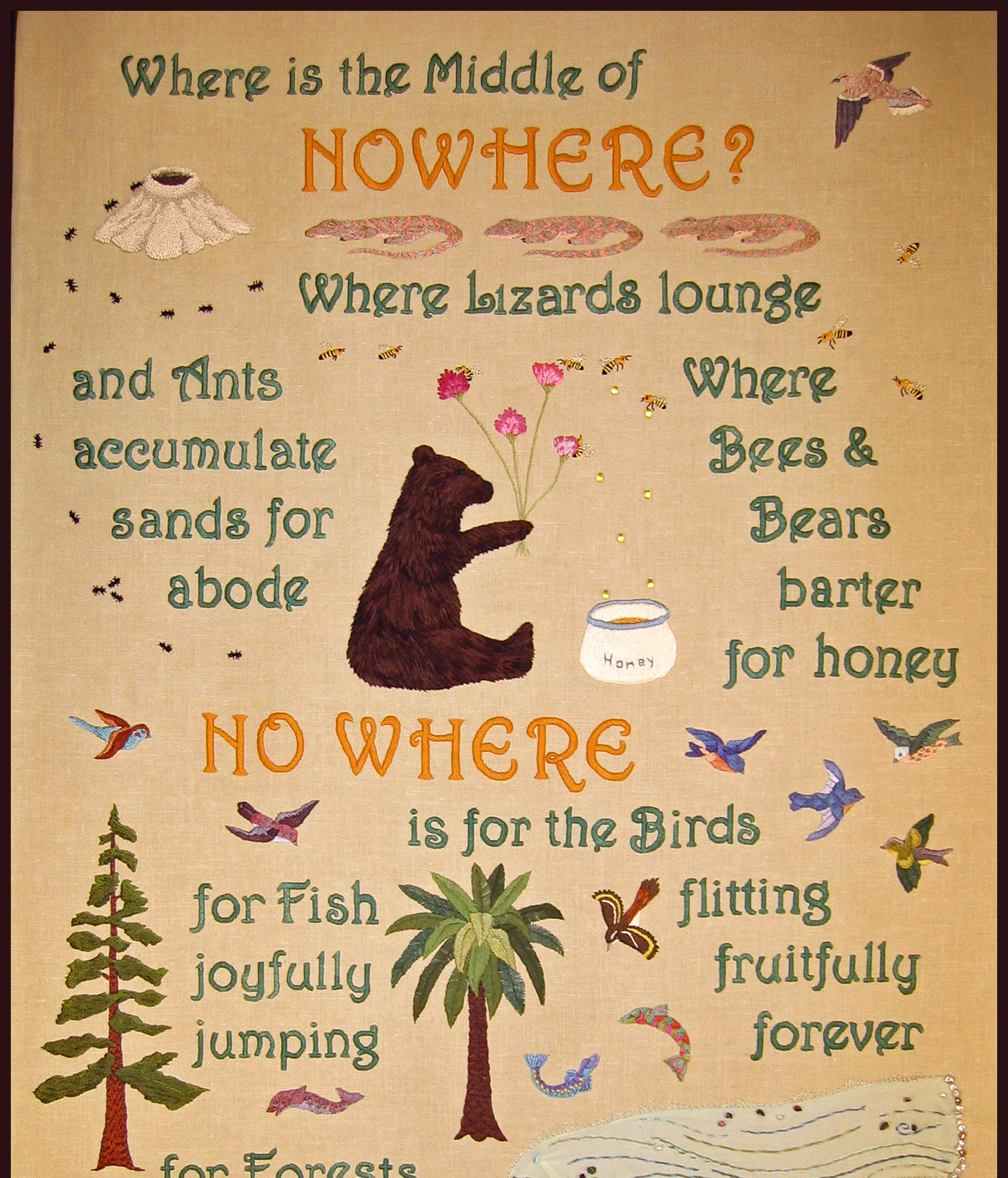


Comments
Post a Comment